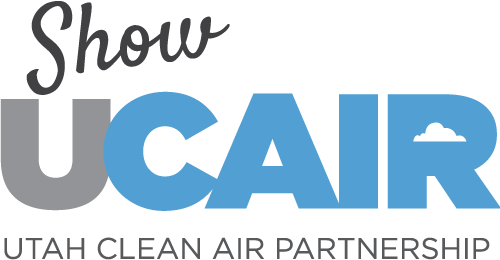At our February 2019 UCAIR partners meeting we heard from two informative presenters. First, Michelle Brown with the Department of Administrative Services told us about their efforts to reduce emissions through an innovative teleworking pilot project. Then, we heard from Bryce Bird, Director of Utah Division of Air Quality. He talked to the group about the State Implementation Plan, followed by a quick legislative update
State Office Building Teleworking Pilot Project – Michelle Brown, Utah Department of Administrative Services
Beginning in October of 2018 some State of Utah agencies began a teleworking pilot program that is slated to wrap up in July of 2019. The agencies currently participating include the Department of Administrative Services (DAS), Department of Technology Services, Department of Human Resource Management and the Utah Department of Insurance. The objectives of the State Office Teleworking Pilot Project are to:
- Decrease emissions and contribute to clean air solutions.
- Increase building capacity thereby deferring cost of additional state space.
- Increase state job opportunities for rural Utah.
- Increase employee performance.
- Increase employee recruitment, retention, and satisfaction.
The first location of the pilot program is the State Office Building Capitol Hill Complex. A second location, the Cannon Health Building where the Department of Health is housed, will begin participating soon. Participation is voluntary while the program is in its pilot stage. Currently, there are total 136 participants. Before an employee can participate in this program, they must have clearly defined and approved performance metrics in place. Additionally, they must agree to:
- Provide commute information for emissions reduction tracking.
- Relinquish any permanent assigned seating in the State Office Building.
- Work three or more days a week from home.
- Report to DAS Executive Director’s Office monthly.
In December 2018 alone this program eliminated 85,833 pounds of CO2 emissions from our airshed. Reductions could increase significantly if the program were to be implemented permanently. A permanent teleworking program would increase the capacity in many state-owned buildings by 25% increase in as utilization increases. As the population of Utah grows significantly, the number of state employees will increase in order to provide services to residents, making appropriate utilization of office space especially important. There would also be more opportunity to hire rural Utahns for jobs that can support telework and allow employees more flexibility in where they choose to live. Thus far, this program has resulted in a 28% increase in employee work performance. The program will continue and may become a permanent option for employees if results are deemed successful by the Governor’s Office of Management and Budget.
State Implementation Plan Update – Bryce Bird, Director Utah Division of Air Quality
On average, we exceed current federal health standards about 5% of days. To address this issue Utah is focusing on establishing policies that will improve our air over time. The Clean Air Act establishes air quality standards that states are required to meet, if they cannot meet these standards they are designated as a non-attainment area. In December 2015, the Environmental Protection Agency (EPA) reclassified several areas in the state as serious non-attainment areas, one step above a non-attainment area. This new designation requires the development of a Serious Area Plan for each are, in addition to the Moderate Area plans that Utah has already submitted. These plans will build upon what has already been accomplished and require the best available control measures and technologies. The deadline for submission of this information to the EPA was December 31, 2017.
Division of Air Quality staff uses EPA standards and computer models to help understand why standards aren’t being meet in the serious non-attainment areas. These sophisticated models can replicate conditions and identify control strategies that will help Utah meet federal standards. The information provided by these computer models is important to state lawmakers, as there is continuing air quality monitoring and enforcement. During this process 30 new rules were adopted, focusing mainly on area sources. There has been a 49% reduction since 2002 in per capita emissions. The goal is to accommodate future growth and continue to maintain this reduction trend. The EPA is currently reviewing the SIP that was recently submitted.
Please visit the Department of Environmental Quality website for a legislative summary.
PARTNER ROUNDTABLE
Following the presentation, partners shared what projects and initiatives they are currently working on. These included:
Bonnie Christiansen, Weber State University – They are hosting the Intermountain Sustainability Summit on March 21-22. Approximately 400 sustainability professionals are expected to attend. There will be workshops that partners are encouraged to join.
Shawn Teigen, Utah Foundation – With the support of UCAIR, they are working on research focusing on air quality projects and looking at incentives for electric vehicles in the state and comparing to other state’s technology and infrastructure for those vehicles.
Thom Carter, UCAIR – Envision Utah has been tasked by the Inland Port to hold two public forums. Tuesday, February 19th 6-8 pm at the State Fairgrounds Zions Building, 155 N 1000 W, Salt Lake City and Thursday, February 28th 6-8 pm at Franklin Elementary School, 1115 W 300 S, Salt Lake City. Utah foundation is having a luncheon May 21st. Utah Bike Summit will be March 5th 8 am -3:30 pm at Thanksgiving Point.
Next Meeting: March 15, 2018, 9:00-11:00 AM

